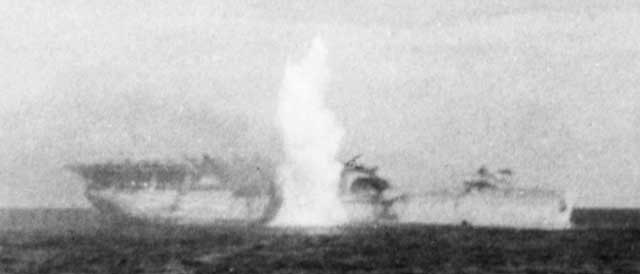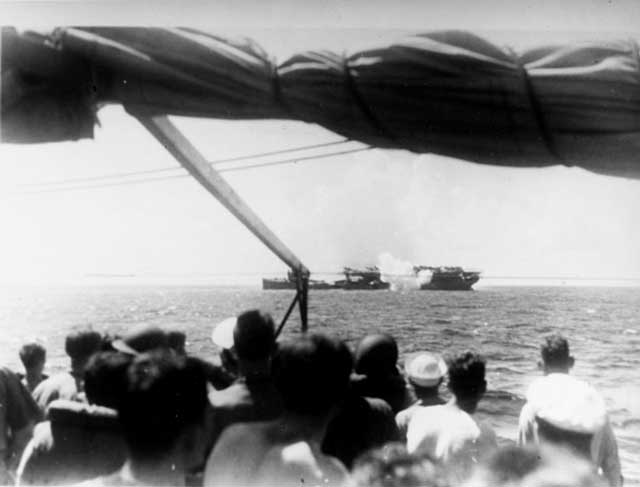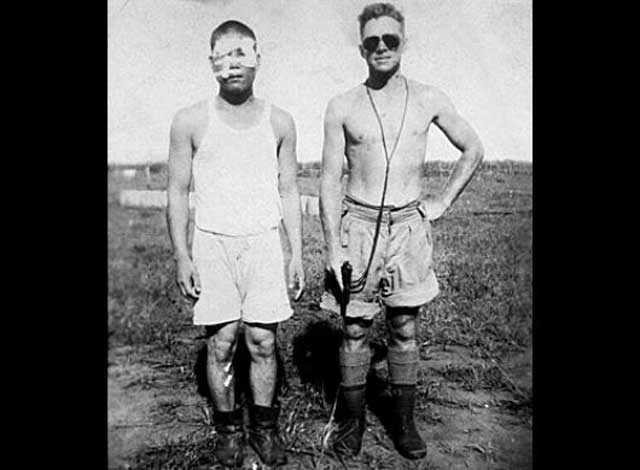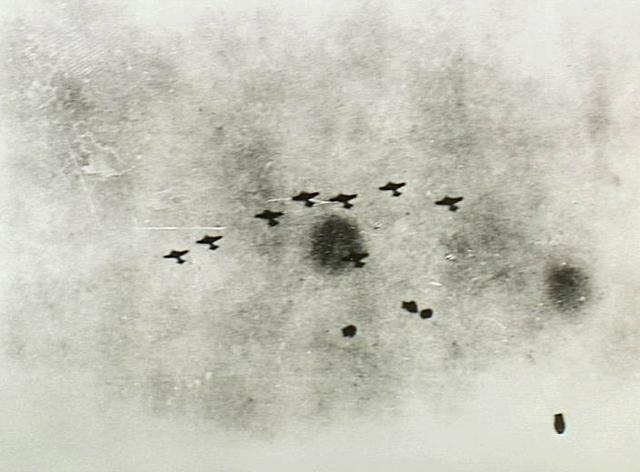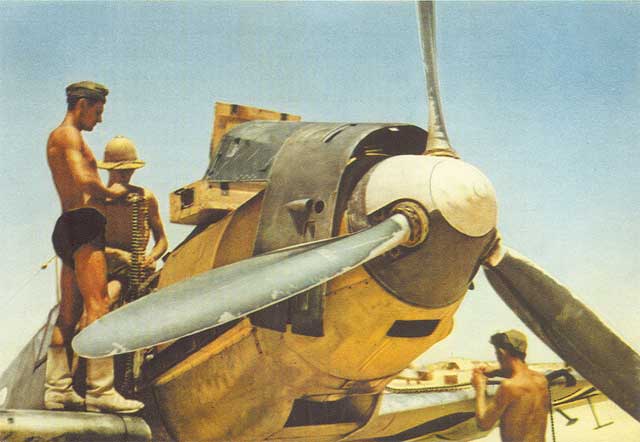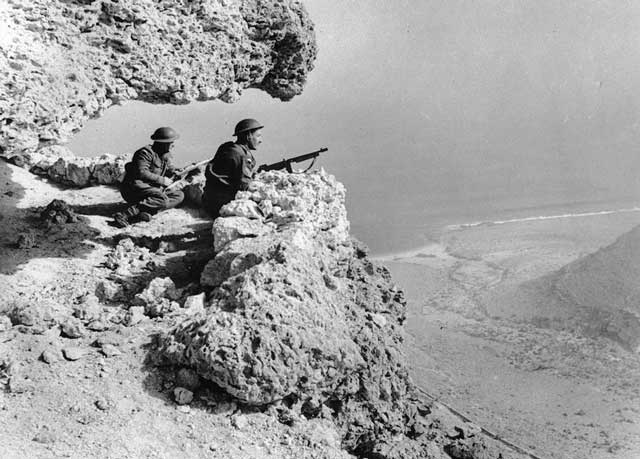Saturday 28 February 1942
 |
| " USS Pope (DD-225) under attack from gunfire from IJN Myoko and Ashigara, air attacks, and scuttling charges during the evacuation of Java, 28 February 1942. She later sank on 1 March. Photograph originally from a Japanese propaganda booklet Victory on the March. U.S. Navy photograph, now in the collections of the National Archives. (7/24/2013)." National Museum of the U.S. Navy 80-G-179003: USS Pope (DD 225) under attack, February 28, 1942. |
Battle of the Pacific: Following the destruction of most of the Allied Combined Striking Force at the Battle of Java Sea late on Friday, Saturday, 28 February 1942, the Allied defense of Java is in disarray. Knowing that the Japanese have complete naval superiority, the Allied commanders order the remaining ships (cruisers USS Houston and HMAS Perth and Dutch destroyer HNLMS Evertsen) to withdraw from Tanjung Priok, north coast of Java, through Sunda Strait to Tjilatjap on the south coast of the island. The Allies do not expect to be spotted, but Japanese destroyer Fubuki happens to be nearby and begins following the fleeing cruisers (Evertsen comes later) at around 23:15. The Allies realize they have been found before midnight and open fire. The battle is short and sharp, with both cruisers quickly abandoned and sinking just after midnight. Evertsen, trying to catch up with the cruisers, also is trapped by Japanese destroyers, catches fire after being hit repeatedly, and explodes. There are 696 deaths on Houston and 375 on Perth, with 368 from Houston and 307 from Perth taken as prisoners. The crew of Evertsen manages to escape to shore but they are taken prisoner eventually, too. Japanese casualties are extremely light, with minor damage to cruiser Mikuma and destroyers Shirayuki and Harukaze.
 |
| Captain Albert Harold Rooks of the USS Houston, who goes down with his ship on 28 February 1942. He posthumously receives a Medal of Honor - the highest honor for any US serviceman - for his actions during the period 4 to February 27, 1942. "Photograph was taken circa 1940. This view was released by the Bureau of Personnel on 14 October 1966. Official U.S. Navy Photograph, from the collections of the Naval History and Heritage Command." NH 97916 Captain Albert H. Rooks, USN. |
With the Allies completely defenseless at sea, the Japanese begin landing troops at three places in Java. These are Bantam near Batavia, at Indramayu (mid-Java), and at Rembang (110 miles from Surabaya). Rembang houses a large oil refinery that is vital to Japanese plans.
 |
| The NY Times highlights the Battle of Java Sea in its 28 February 1942. Nobody knows the outcome of these battles right away. |
General Gordon Bennett becomes one of the few top officers to successfully escape from Singapore when he reaches Australia today. He is the most senior officer to evade capture or death. Bennett is extremely pessimistic and believes that an invasion of Australia itself is imminent. He heads for Sydney to report to the government.
Japanese submarine I-4 torpedoes and sinks 1693-ton Dutch freighter Ban Ho Guan south of Bali, while Japanese patrol boats sink 983-ton Dutch freighter Tomohon off Tjilatjap. All 30 men on the Tomohon survive. Japanese fighters shoot down British Overseas Airways Corp. (BOAC) Short S-23 C-Class Empire Boat, msn S-842, registered G-AETZ, after it takes off from Tjilatjap, Java, bound for Australia.
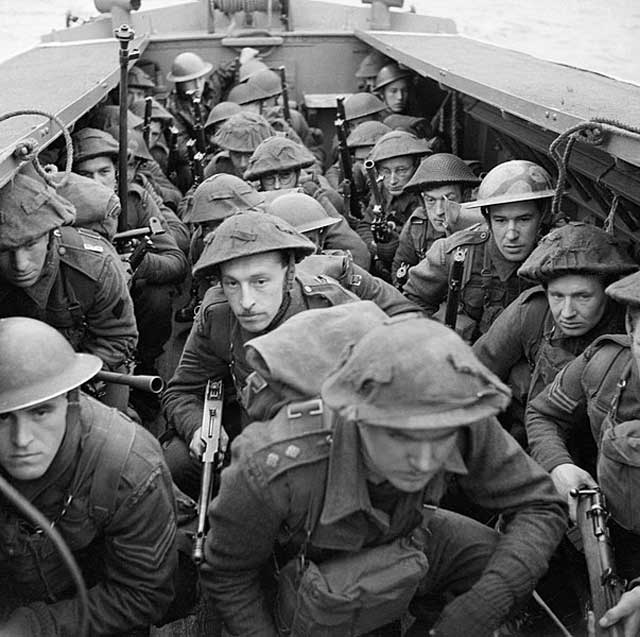 |
| "Commandos in a landing craft taking them ashore during training in Scotland, 28 February 1942." © IWM (H 17472). |
 |
| "Squadron Leader Percy Pickard, Commanding Officer of No. 51 Squadron RAF, inspects a captured German helmet with parachute troops after the Bruneval raid, 28 February 1942. On the night of 27/28 February Pickard's squadron of Whitleys dropped 'C' Company, 2nd Parachute Battalion (commanded by Major J D Frost) near a German Wurzburg radar site at Bruneval near Le Havre in northern France - its objective to seize components of the radar and then evacuate them by sea." © IWM (H 17347). |
European Air Operations: Operations are light. RAF Bomber Command sends six Blenheims with a fighter escort to attack north German ports. They return without loss.
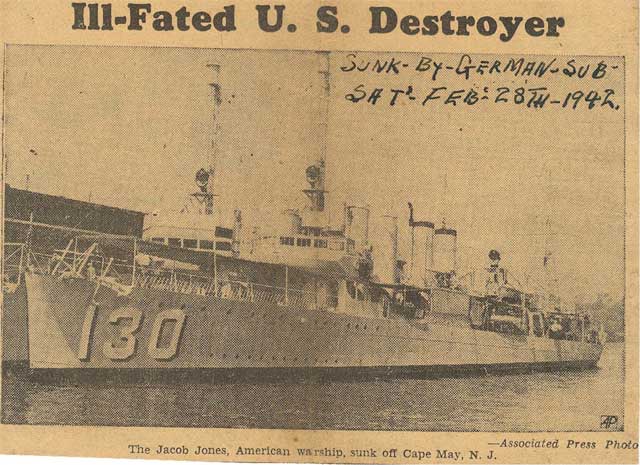 |
| A newspaper clipping showing "Ill-fated U.S. Destroyer" Jacob Jones, sunk on 28 February 1942. |
U-129 (Kptlt. Asmus Nicolai Clausen), on its fourth patrol out of Lorient, torpedoes 2605-ton Panamanian freighter Bayou at 07:45 about 140 miles north of Paramaribo, Suriname. The ship sinks immediately, within 25 seconds according to the U-boat commander. This concludes an 18-hour chase by U-129. There is only one survivor and 24 dead.
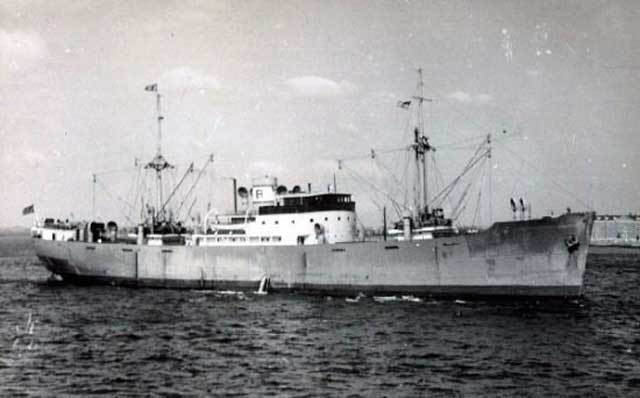 |
| Norwegian freighter Leif, sunk on 28 February 1942. |
U-156 (Kptlt. Werner Hartenstein), on its second patrol out of Lorient, concludes an outstanding patrol today by using gunfire to sink independent 7017-ton US tanker Oregon. Hartenstein is out of torpedoes and on his way home, but when he spots Oregon 130 miles north of the Mona Passage (170 miles (274 km) northwest of San Juan, Puerto Rico) he can't resist attacking despite the fact that his gun is in poor condition, too, due to an accident off Aruba. U-156 approaches to within 900 meters and opens fire, immediately scoring hits. The second shell hits the bridge, killing the entire bridge crew including Master Ingvald C. Nilsen. This causes the tanker to sail out of control, hitting U-156 but not seriously damaging the U-boat. Hartenstein then pumps the rest of his deck gun's shells into the tanker at point-blank range, sinking it. The tanker's crew is able to abandon ship and there are six dead and 30 survivors. Some of the crew later claim that Hartenstein intentionally tried to kill them as they lowered a lifeboat and then again in the water, but there is no proof of that. Hartenstein's U-156 has sunk a total of five ships and damaged two others for a total of 22,723-tons sunk and 10,769-tons damaged.
Italian submarine Da Vinci torpedoes and sinks 3644-ton Latvian freighter Everasma in the mid-Atlantic east of Guadeloupe. There are 15 survivors.
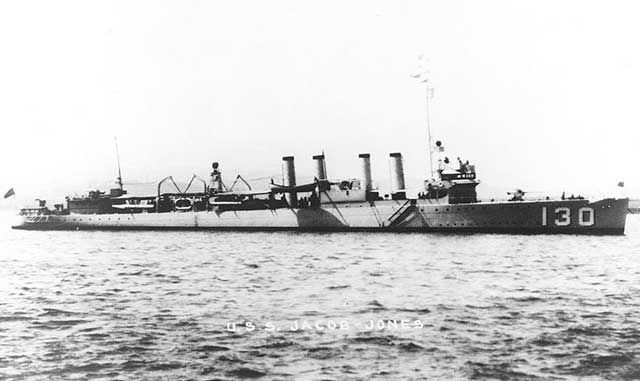 |
| Destroyer USS Jacob Jones, 1930s, lost on 28 February 1942 (US Navy photo). |
US/French Relations: The U.S. Consul-General in New Caledonia officially recognizes the authority of Free French forces over French islands in the Pacific. This is announced on 12 March.
US Government: The Dies Committee (which later becomes the House Un-American Activities Committee) issues a report on pre-war espionage in the United States by the Japanese. This widely anticipated "Yellow Paper" concludes that there was a wide-spread spy ring of about 150,000 members in the United States. This provides a foundation for the internment of Japanese Americans.
 |
| The Carolina Times for 28 February 1942. This newspaper (which remains in existence) focuses on news from a racial equality viewpoint. |
India: From Berlin, Subhas Chandra Bose makes a radio broadcast affirming his support of the goals of the Third Reich and expressing his wish for an independent India. This is the first of two such broadcasts that he makes, the second is on 11 March.
Holocaust: There are mass killings at the Chelmno concentration camp in Poland. While it is impossible to single out many deaths, today Stanislaw Kaszyński, the secretary of the local Polish council, is put to death along with his wife. Kaszyński has been trying to publicize the exterminations at the camp. An obelisk to his memory is dedicated on 7 August 1991 at Chelmno.
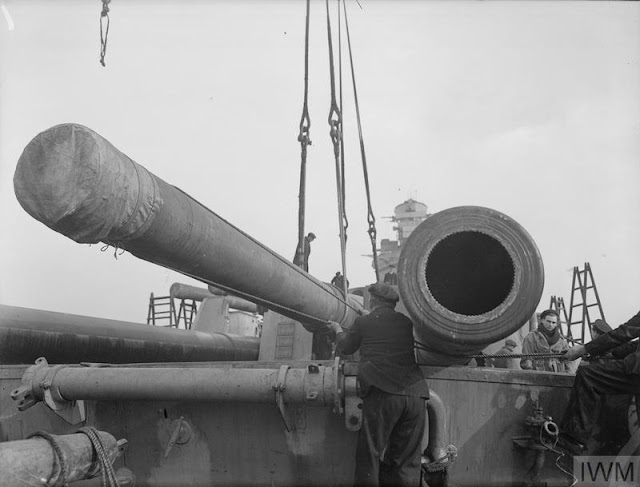 |
| "Changing the 16-inch guns on HMS RODNEY at Cammel Laird shipyard, Birkenhead. Lowering a gun into position in "A" turret." 28 February 1942. © IWM (A 7690). |
American Homefront: "Moonlight Cocktail" by Glenn Miller and his Orchestra and written by Luckey Robers with lyrics by Kim Gannon hits No. 1 on the Billboard singles chart. It remains on top for ten weeks, taking over from Miller's own "String of Pearls." The record was recorded on 8 December 1941 with vocals by Ray Eberle and The Modernaires. However, not everybody enjoys "Moonlight Cocktail," as the BBC bans it in August 1942 as "sentimental slush" that does not aid the war effort. "Moonlight Cocktail" becomes the number two record of 1942, behind only Bing Crosby's classic "White Christmas."
 |
| Picture Post magazine, 28 February 1942. At this point in the war, India considered very much in jeopardy. |
February 1942
February 1, 1942: The US Navy Strikes Back
February 2, 1942: Germans Recovering in Russia
February 3, 1942: Japanese Shell and Bomb Singapore
February 4, 1942: Battle of Makassar Strait
February 5, 1942: Empress of Asia Sunk
February 6, 1942: The Christmas Island Body
February 7, 1942: The Double-V Campaign
February 8, 1942: Japan Invades Singapore
February 9, 1942: French Liner Normandie Capsizes
February 10, 1942: US Car Production Ends
February 11, 1942: Tomforce Fails on Singapore
February 12, 1942: The Channel Dash
February 13, 1942: Japanese Paratroopers In Action
February 14, 1942: RAF Orders Terror Raids
February 15, 1942: Japan Takes Singapore
February 17, 1942: Indian Troops Defect to Japanese
February 18, 1942: Battle of Badung Strait
February 19, 1942: FDR Authorizes Internment Camps
February 20, 1942: O'Hare the Hero
February 21, 1942: Crisis in Burma
February 22, 1942: Bomber Harris Takes Over
February 23, 1942: Bombardment of Ellwood, California
February 24, 1942: US Raid on Wake Island
February 25, 1942: Battle of Los Angeles
February 26, 1942: Gneisenau Eliminated
February 27, 1942: Battle of Java Sea
February 28, 1942: Battle of Sunda Strait
March 1942
March 1, 1942: Second Battle of Java Sea
March 2, 1942: Huge Allied Shipping Losses at Java
March 3, 1942: Japan Raids Western Australia
March 4, 1942: Second Raid On Hawaii
March 5, 1942: Japan Takes Batavia
March 6, 1942: Churchill Assaults Free Speech
March 7, 1942: British Defeat in Burma
March 8, 1942: Rangoon Falls to Japan
March 9, 1942: Japanese Conquest of Dutch East Indies
March 10, 1942:US Navy attacks Japanese Landings at Lae
March 11, 1942: Warren Buffett's First Stock Trade
March 12, 1942: Japan Takes Java
March 13, 1942: Soviets Attack In Crimea Again
March 14, 1942: The US Leans Toward Europe
March 15, 1942: Operation Raubtier Begins
March 16, 1942: General MacArthur Gets His Ride
March 17, 1942: MacArthur Arrives in Australia
March 18, 1942: Japan Attacks In Burma
March 19, 1942: Soviets Encircled on the Volkhov
March 20, 1942: "I Shall Return," Says MacArthur
March 21, 1942: Germans Attack Toward Demyansk
March 22, 1942: Second Battle of Sirte
March 23, 1942: Hitler's Insecurity Builds
March 24, 1942: Bataan Bombarded
March 25, 1942: Chinese Under Pressure in Burma
March 26, 1942: Win Or Die, Vows MacArthur
March 27, 1942: The Battle of Suusari
March 28, 1942: The St. Nazaire Commando Raid
March 29, 1942: The Free Republic of Nias
March 30, 1942: Japanese-Americans Off Bainbridge Island
March 31, 1942: Japanese Seize Christmas Island
2020





